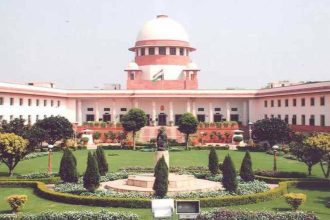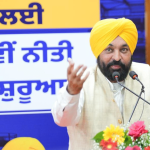
Mumbai: Temperatures in parts of Mumbai and its satellite towns showed alarming differences of up to 13 degrees Celsius in March, a study by a climate-tech start-up revealed, indicating that the city was experiencing an intensifying Urban Heat Island (UHI) effect. As per an analysis by Respirer Living Sciences, microclimate zones are increasingly forming in the city, calling for a localised approach to deal with heat stress.
Between March 1 and March 22, the suburbs of Vasai West and Ghatkopar experienced average temperatures of 33.5 degrees Celsius and 33.3 degrees Celsius, respectively, while Powai, one of the greener and less densely built areas in the city, registered a much cooler average of 20.4 degrees Celsius. “This represents a striking 13.1 degrees Celsius difference within the same city,” it said.
UHI refers to the significant temperature difference between densely built urban zones and less developed or greener parts of a city. Heat-retaining infrastructure, such as concrete buildings and roads, lack of vegetation, and localised pollution levels primarily drive this difference.
‘Witnessing formation of microclimate zones within cities’
“Increasingly, we are witnessing the formation of microclimate zones within cities like Mumbai,” said Ronak Sutaria, founder and CEO of Respirer Living Sciences. He said these temperature differences are not just academic. They translate into higher heat stress and related health problems for residents, especially in poorly ventilated or overbuilt neighbourhoods.
According to data from 22 Central Pollution Control Board (CPCB) stations, Vasai West topped the list with an average temperature of 33.5 degrees Celsius, followed closely by Ghatkopar at 33.3 degrees Celsius and Colaba (south Mumbai) at 32.4 degrees Celsius.
In stark contrast, Powai recorded a much cooler average of 20.4 degrees Celsius, while Chakala (Andheri east) was at 23.4 degrees Celsius and Chembur at 25.5 degrees Celsius.
The study stated that the temperature differences across the city showed that while 13.1 degrees Celsius gap was seen between Vasai West and Powai, Colaba registered 32.4 degrees Celsius compared to 23.4 degrees Celsius in Chakala, an urban heat difference of 9.0 degrees Celsius. Ghatkopar, at 33.3 degrees Celsius, was 7.8 degrees Celsius warmer than Chembur, which averaged 25.5 degrees Celsius, it said.
Sutaria said, “Microclimates are forming within Mumbai, and the data makes this undeniable. It’s not just about summer getting hotter. It’s about some neighbourhoods facing disproportionate heat stress. This impacts everything from public health and energy demand to urban planning and equity.” Interestingly, even Colaba, on Mumbai’s southern tip known for its coastal breezes, now appears on the warmer end of the spectrum, underscoring that even so-called “cool zones” are not immune to rising heat levels, the study said.
Stressing the need for zone-specific heat forecasting, Sutaria said, “We cannot treat Mumbai as a single thermal unit. Our mitigation efforts, from tree plantation drives to heat action plans, must be customised based on hyperlocal data. Green infrastructure, reflective surfaces, and responsible architectural choices are all part of the solution to create healthy cities.” In March 2025, Mumbai faced multiple heatwaves or heatwave-like events, highlighting the growing intensity of extreme heat conditions.
The India Meteorological Department (IMD) issued official heatwave warnings in the first half of the month, particularly between March 6 and 11, as temperatures soared close to 40 degrees Celsius. A combination of strong easterly winds and delayed sea breeze caused by an anticyclone system led to unusually high daytime temperatures, especially on March 9 and 10, when the mercury hovered around 37 degrees Celsius.
A fresh temperature spike followed from March 15, with forecasts predicting a further 2 to 4 degrees Celsius increase, and warnings were issued for March 18. Sutaria said, “Episodes of sustained heat stress before the official start of summer highlight the urgency of addressing UHI effects and enhancing localised heat preparedness in Mumbai, signalling that heat stress is becoming more complex and uneven.”










